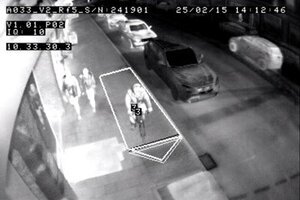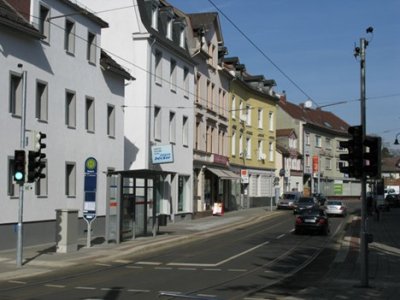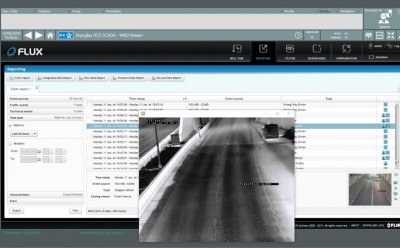How thermal technology is bridging the gap towards smarter cities

The idea of a ‘smart city’ is not a new concept. The term has been used extensively over the past decade, yet we are only beginning to recognise and harness its true potential. What defines a smart city and the technology used to create it is constantly changing and adapting to meet citizens’ changing needs.
Intelligent transport and data-driven public safety will be at the top of cities’ agendas over the coming years. The latest IDC Worldwide Smart Cities spending guide outlined that the main priorities superseding these are resilient energy and infrastructure projects. Total global spend is due to amount to a whopping $189.5 billion (€161.88 billion) by 2023.
With such large investments, visions of a smart city future are becoming a reality and developments in local towns as well as larger cities across Europe are showing that the world is ready to embrace it . But as technological innovations are beginning to surpass city infrastructure spending, it is essential to ask the question: how can technologies make the infrastructure we already have not only ‘smarter’ but safer?
Smarter transport systems are the key to unlocking a smarter city
Informing travelers and commuters of hazards, delays and alternate routes is essential to keeping cities moving. It is vital for intelligent transport systems (ITS) to detect and measure the traffic in a reliable way across any spectrum of conditions, in real-time. By utilising smart sensors and thermal imaging as a part of this system means that vision is extended through the detection of heat emissions and allows for four-times greater recognition than that offered by traditional cameras.
Providing traffic controllers with an extended and clarified vision, provided by thermal, allows differentiation between cars, trams and pedestrians, as well as vulnerable road users such as cyclists. From this, we are equipped with greater insight into foreseeing delays and hazards which may occur across roads and highways. The data gathered from this technology further allows for seamless interaction between traffic controllers and first responders, providing efficient collaboration.

One example is from the City of Darmstadt in Germany, whereby the city is utilising smart sensors to guarantee the safety of schoolchildren and passers-by. With two local schools being positioned in a relatively dangerous by-section of traffic, the technology works by detecting pedestrians and adapts to the green phase of the traffic light system accordingly, so that pedestrians can cross safely in a well-adjusted time. A major advantage of using sensors for detection is that no extensive civil engineering is required. City technicians can install smart sensors and set it up without the cost of commissioning outside companies.
The city of Darmstadt uses different types of video sensors for vehicle, pedestrian and cyclist detection in order to control the entire flow of traffic in a more intelligent way.
A connected future for cities
Cloud technology can be utilised to ensure high-level communication between entities, and ensure the smooth running of a cities. This enables a cohesive data collection for AI analysis, ensuring inter-device connectivity across different intersections in a city. The scalability and dynamic offering of cloud platforms allow for tailored solutions to seamlessly address specific problems across city-level operations, management platforms and associated interfaces. By combining this with smart thermal, cities have the tools in place to monitor and identify traffic flow, detect incidents in real-time and inform travelers of potential disruption.
Through synchronising to a central node of communication, the control centre allows for the retrieval of information from a unified access point. By using global displays and AI driven-data processing faster and more cohesive responses are enabled to reach service points across the city within a short period of time. As well as increasing first responder’s ability to react, the technology eases the flow and safety of traffic for the everyday traveler.
Locating and reacting to incidents in real-time
We rely on the speed and assurance of essential services to assist us when road accidents occur. To react in real-time, they need smarter tools to minimise any disruption which adds time to their journey and inhibits them from reaching people in need. Typically, it is traditional video surveillance operations which are used in this instance and are useful for investigations, yet these lack the tools and coverage that could change the outcome of an occurring event in real-time.
 An example of authorities utilising this technology can be seen in Wales, UK where authorities have utilised FLIR thermal imaging sensors on a notoriously dangerous tunnel. With 80,000 vehicles passing through on peak days, incident detection technology is important for the safety of the tunnel/road users. By combining smart visual and thermal cameras, officials are notified of potential hazards or incidents occurring within the tunnel, helping decrease the number of incidents.
An example of authorities utilising this technology can be seen in Wales, UK where authorities have utilised FLIR thermal imaging sensors on a notoriously dangerous tunnel. With 80,000 vehicles passing through on peak days, incident detection technology is important for the safety of the tunnel/road users. By combining smart visual and thermal cameras, officials are notified of potential hazards or incidents occurring within the tunnel, helping decrease the number of incidents.
Plus, it’s not only the immediate benefits we can see from safety features. The vast amount of data collected from daily monitoring can then be analysed and used by city authorities to make these roads safer. This use of variable speed limits has also enabled urban planners to make smarter, safer transport decisions, slowing traffic down when an accident has occurred and minimising stand-still traffic.
Initiatives such as these empower authorities to adapt safety measures to meet their own city’s needs. From targeting slow commutes and dangerous crossings in Darmstadt to reducing collisions in a busy tunnel in Wales recognising and building intelligent solutions to unique issues has never been more of a reality. Technology is enabling cities and its citizens to keep moving while allowing authorities are able to prioritise the safety of communities in their vision of a future smart city.
Comment on this article below or via Twitter @IoTGN
